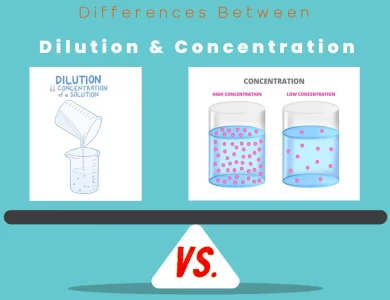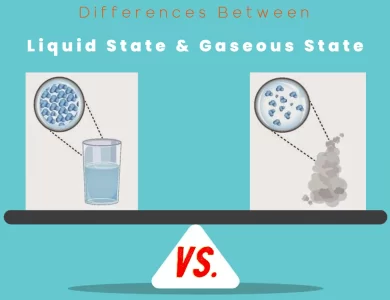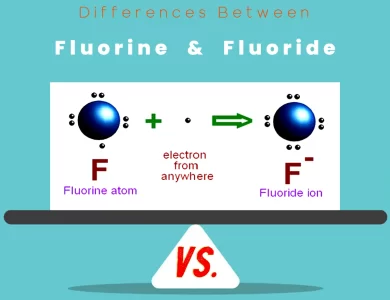
| Aspect | Normal Air | Nitrogen |
|---|---|---|
| Composition | Mix of gases, primarily 78% nitrogen, 21% oxygen, and trace gases | Approximately 95-99% nitrogen with trace gases |
| Pressure Stability | Prone to pressure fluctuations due to oxygen permeation and temperature changes | Provides more stable pressure over time, minimizes pressure variations |
| Moisture Content | Contains water vapor, which can condense inside tires | Dry, lacks water vapor, preventing internal tire corrosion |
| Temperature Effects | Sensitive to temperature changes, leading to pressure fluctuations | Less sensitive to temperature changes, maintaining consistent pressure |
| Permeation Rate | Oxygen molecules permeate through rubber faster | Nitrogen molecules have a slower leak rate |
| Compatibility/Availability | Widely accessible at gas stations, tire shops, and via air compressors | May require a specialized service center |
| Cost Considerations | Typically free or included in service costs | Often involves a fee for specialized equipment and materials |
| Environmental Impact | Contains trace greenhouse gases | Environmentally friendly, with no harmful emissions |
When it comes to keeping your vehicle’s tires properly inflated, there are two main options: normal air and nitrogen. Most of us have used regular air to fill our tires without giving it much thought. However, in recent years, nitrogen has gained popularity as an alternative. But what are the key differences between these two options? Which one is better for your tires and your vehicle’s performance? In this comprehensive guide, we’ll explore the key aspects that set normal air and nitrogen apart.
Differences Between Normal Air and Nitrogen in Tires
The main differences between normal air and nitrogen in tires boil down to composition, pressure stability, moisture content, temperature sensitivity, permeation rate, availability, cost, and environmental impact. Normal air is a mixture of gases, including oxygen, which can lead to pressure fluctuations and moisture accumulation within tires, potentially causing corrosion. Nitrogen, on the other hand, consists of nearly pure nitrogen with minimal moisture, ensuring more stable tire pressure, reduced sensitivity to temperature changes, and slower leak rates. While normal air is widely accessible and typically free, nitrogen inflation may come at a cost due to specialized equipment. Nitrogen is also an eco-friendly choice, as it lacks harmful emissions, making it a preferred option for those prioritizing tire performance and environmental consciousness.
The Composition: Nitrogen’s Purity vs. Regular Air
Normal Air: When you fill your tires with normal air, you’re getting a mix of approximately 78% nitrogen, 21% oxygen, and trace amounts of other gases, including carbon dioxide, argon, and water vapor. The composition of normal air can vary slightly depending on your location and altitude.
Nitrogen: Nitrogen inflation involves using nearly pure nitrogen, typically around 95-99% nitrogen, with the remainder being trace amounts of other gases. This high level of purity is one of the primary differences between nitrogen and regular air.
Why Nitrogen’s Purity Matters: The higher nitrogen purity in tires offers several advantages. Nitrogen molecules are larger than oxygen molecules, which means they are less likely to escape through the rubber of your tires over time. This leads to more stable tire pressure, reducing the need for frequent top-ups.
Additionally, nitrogen lacks the moisture content found in normal air. This absence of water vapor prevents internal corrosion and rusting of the tire rims and steel belts, extending the lifespan of your tires.
Pressure Stability: Nitrogen’s Consistency vs. Air’s Variability
Normal Air: The composition of regular air includes oxygen, which tends to permeate through the tire’s rubber at a faster rate than nitrogen. This can lead to gradual pressure loss in your tires over time. Factors such as temperature fluctuations, altitude changes, and driving habits can further affect the pressure in your tires filled with normal air.
Nitrogen: Due to its larger molecular size and higher purity, nitrogen is less prone to leaking through the tire’s rubber. This results in more stable tire pressure over extended periods. Nitrogen-inflated tires typically experience less pressure variation due to temperature changes.
Why Pressure Stability Matters: Maintaining proper tire pressure is crucial for safety, fuel efficiency, and tire longevity. Underinflated tires can lead to decreased fuel efficiency, reduced handling and braking performance, and increased tire wear. The stability of nitrogen-filled tires reduces the need for frequent pressure checks and adjustments.
Moisture Content: Dry Nitrogen vs. Humid Air
Normal Air: Regular air contains varying levels of moisture, primarily in the form of water vapor. This moisture can condense inside the tire when temperatures fluctuate, especially in regions with high humidity.
Nitrogen: Nitrogen is dry, meaning it lacks water vapor. This dryness is a significant advantage when it comes to tire maintenance.
Why Moisture Content Matters: Moisture inside a tire can lead to several issues. First, it can cause pressure fluctuations as the water vapor expands and contracts with temperature changes. Second, moisture can contribute to corrosion of the tire’s internal components, such as the rims and steel belts. Nitrogen’s dryness eliminates these concerns, ensuring stable pressure and prolonging tire life.
Temperature Effects: Nitrogen’s Resistance to Heat vs. Air’s Sensitivity
Normal Air: The pressure in tires filled with regular air is more susceptible to temperature changes. As the temperature rises, the air inside the tire expands, increasing pressure. Conversely, in colder temperatures, the air contracts, reducing pressure. These fluctuations can be significant, affecting tire performance.
Nitrogen: Nitrogen is less sensitive to temperature changes compared to normal air. It exhibits minimal expansion and contraction with temperature variations, ensuring that your tire pressure remains more consistent.
Why Temperature Effects Matter: Temperature-related pressure changes can lead to safety hazards and vehicle performance issues. Overinflated tires can result in reduced traction and handling, while underinflated tires can increase the risk of blowouts. Nitrogen’s resistance to temperature effects helps maintain safe and optimal tire pressure throughout the year.
Permeation Rate: Nitrogen’s Slower Leak Rate vs. Air’s Faster Leak Rate
Normal Air: Oxygen molecules in regular air are smaller than nitrogen molecules, making them more prone to permeate through the tire’s rubber. This leads to a gradual loss of tire pressure over time.
Nitrogen: Nitrogen molecules are larger and less likely to permeate through the tire’s rubber, resulting in a slower leak rate. This means you won’t have to top up your tires as frequently when they’re filled with nitrogen.
Why Permeation Rate Matters: Reduced leak rates mean less time and effort spent on maintaining tire pressure. Nitrogen-filled tires can go longer between top-ups, which can be especially beneficial for those who want hassle-free tire maintenance.
Compatibility and Availability: Accessibility of Normal Air vs. Nitrogen
Normal Air: Access to regular air for inflating your tires is widely available. You can find it at gas stations, tire shops, and even in your own garage with a simple air compressor.
Nitrogen: While nitrogen inflation is becoming more common, it’s not as readily available as regular air. You may need to visit a specialized service center or tire shop to get your tires filled with nitrogen.
Why Compatibility and Availability Matter: The accessibility of normal air makes it a convenient option for tire inflation. You can maintain your tires with ease almost anywhere. Nitrogen, on the other hand, may require more effort to find a service center that offers this option. Consider your location and convenience when choosing between the two.
Cost Considerations: Nitrogen’s Investment vs. Free Air
Normal Air: Inflating your tires with regular air is typically free or included in the cost of other services, such as a tire rotation or oil change. Most gas stations also offer free air for customer use.
Nitrogen: Nitrogen inflation often comes with a cost, as it involves specialized equipment and materials. Some service centers may charge a fee for filling your tires with nitrogen.
Why Cost Considerations Matter: The cost of nitrogen inflation is a factor to consider when deciding between nitrogen and regular air. While nitrogen offers several benefits, including improved tire pressure stability and longer tire life, you’ll need to weigh these advantages against the added expense.
Environmental Impact: Nitrogen’s Eco-Friendly Profile vs. Air’s Natural Composition
Normal Air: Regular air is composed of natural elements found in the atmosphere, making it an environmentally friendly choice. However, it does contain trace amounts of greenhouse gases, such as carbon dioxide.
Nitrogen: Nitrogen is an inert gas, and using it in your tires does not introduce any harmful emissions or greenhouse gases. This makes it an eco-friendly option.
Why Environmental Impact Matters: For those concerned about reducing their carbon footprint, nitrogen is a more environmentally conscious choice. While the environmental impact of tire inflation is relatively small compared to other factors, every effort to minimize emissions contributes to a greener planet.
Conclusion: Choosing Between Normal Air and Nitrogen
In the end, the choice between normal air and nitrogen for your tires depends on your priorities and circumstances. Each option has its own set of advantages and disadvantages. To help you make an informed decision, let’s summarize the key differences:
- Composition: Nitrogen has a higher purity level, while normal air is a mix of gases.
- Pressure Stability: Nitrogen provides more consistent pressure over time.
- Moisture Content: Nitrogen is dry, while normal air contains water vapor.
- Temperature Effects: Nitrogen is less sensitive to temperature changes.
- Permeation Rate: Nitrogen has a slower leak rate.
- Compatibility and Availability: Normal air is more accessible.
- Cost Considerations: Nitrogen inflation may come with a cost.
- Environmental Impact: Nitrogen is environmentally friendly.
Consider your specific needs and priorities, such as convenience, tire maintenance frequency, and environmental concerns, when deciding which option is right for you. If you prioritize stable tire pressure and longer tire life, nitrogen may be worth the investment. However, if accessibility and cost are more important to you, regular air remains a reliable choice. Ultimately, both options can help you maintain safe and efficient tire performance, so choose the one that aligns best with your preferences and circumstances.
FAQs
While nitrogen does offer several advantages like improved pressure stability and reduced moisture content, whether it’s significantly better depends on your specific needs and priorities. For everyday driving, regular air may suffice, but if you desire consistent tire pressure and extended tire life, nitrogen may be worth considering.
Nitrogen-filled tires typically require less frequent pressure checks due to their slower leak rate and reduced sensitivity to temperature changes. However, it’s still essential to perform regular maintenance checks, especially before long trips.
Yes, you can mix nitrogen and regular air if necessary. However, it’s recommended to maintain a higher percentage of nitrogen for the benefits to remain noticeable. Mixing won’t harm your tires, but it may reduce some of the advantages of using nitrogen.
The cost of nitrogen inflation can vary, but it’s generally considered an investment in tire longevity and performance. If you prioritize these benefits and don’t mind the expense, nitrogen can be worth it. However, if you’re on a tight budget, regular air remains a viable option.
Yes, nitrogen is more environmentally friendly. It lacks harmful emissions and greenhouse gases found in regular air, making it a greener choice for those concerned about their carbon footprint.
Yes, you can switch between nitrogen and regular air as needed. There’s no harm in transitioning between the two, although it’s advisable to purge the existing gas fully to maximize the benefits of the new inflating gas.
Nitrogen inflation can help maintain proper tire pressure, which is essential for optimal fuel efficiency. Underinflated tires can lead to decreased gas mileage, so in that sense, nitrogen can contribute to better fuel economy.
While nitrogen isn’t as widely available as regular air, many tire shops and service centers offer nitrogen inflation. It’s becoming increasingly common, so finding a nearby location should not be overly challenging.
While nitrogen can reduce the risk of slow pressure loss due to its slower leak rate, it cannot prevent all flat tires or blowouts. Proper tire maintenance, including regular inspections and checking for punctures, is still essential for tire safety.
The primary disadvantage of using nitrogen is the cost associated with its inflation, as it requires specialized equipment. Additionally, if you encounter a situation where nitrogen is unavailable, it may be challenging to top up your tires in an emergency.
Read More:
Reference:
Contents
- Differences Between Normal Air and Nitrogen in Tires
- The Composition: Nitrogen’s Purity vs. Regular Air
- Pressure Stability: Nitrogen’s Consistency vs. Air’s Variability
- Moisture Content: Dry Nitrogen vs. Humid Air
- Temperature Effects: Nitrogen’s Resistance to Heat vs. Air’s Sensitivity
- Permeation Rate: Nitrogen’s Slower Leak Rate vs. Air’s Faster Leak Rate
- Compatibility and Availability: Accessibility of Normal Air vs. Nitrogen
- Cost Considerations: Nitrogen’s Investment vs. Free Air
- Environmental Impact: Nitrogen’s Eco-Friendly Profile vs. Air’s Natural Composition
- Conclusion: Choosing Between Normal Air and Nitrogen
- FAQs






